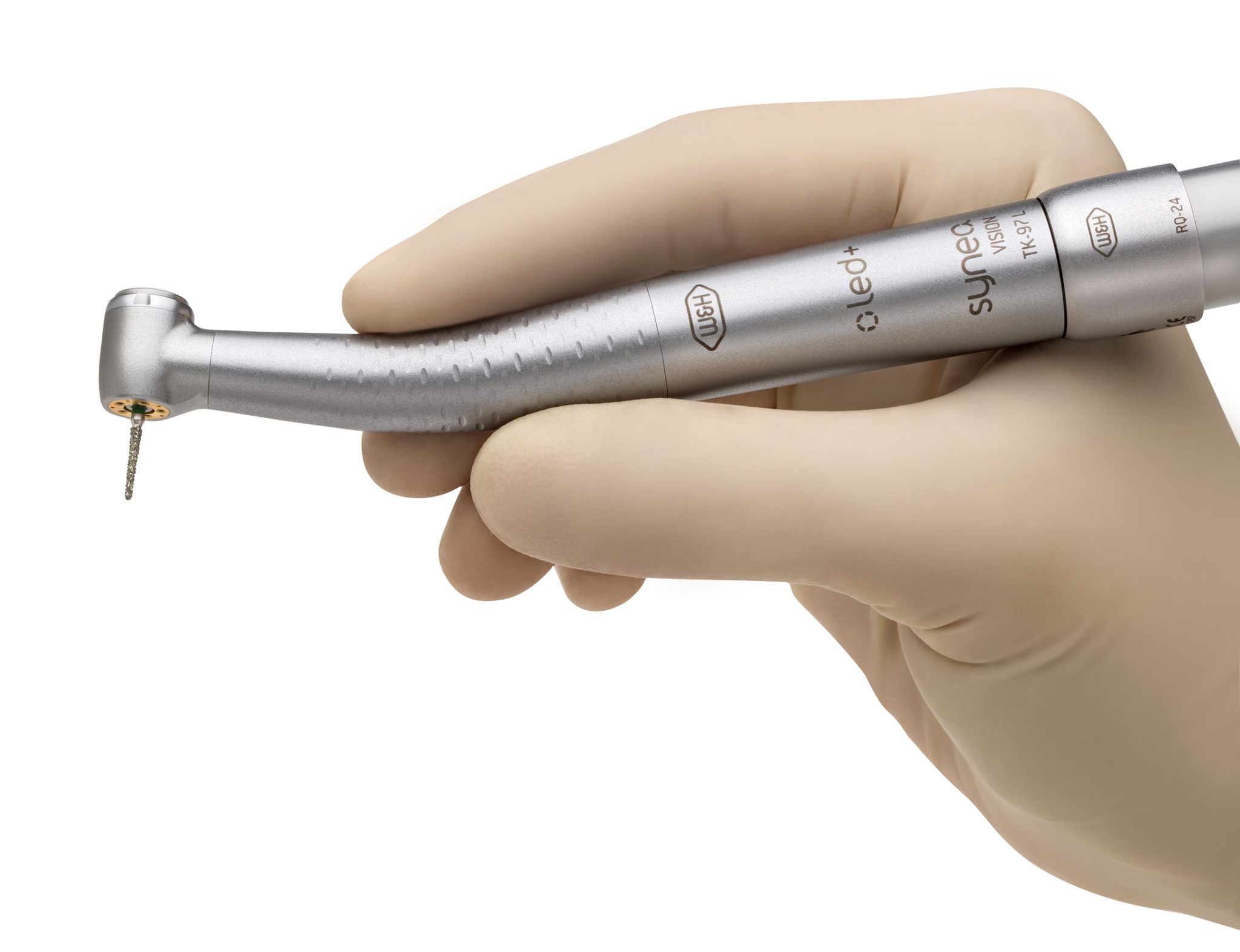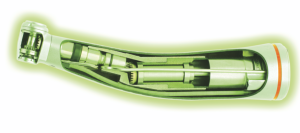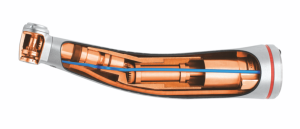Why do handpiece maintenance processes need automating?
Featured Products Promotional FeaturesPosted by: Dental Design 31st October 2023

Investing in your handpieces means that you can improve the quality of care that you provide. To protect your handpieces’ longevity, and ensure that they are working to maximum potential, so that your patients receive high-quality treatment, it’s important to employ the best methods of maintenance.
The issue of handpiece maintenance and decontamination has become more and more important with the development of automated devices to ensure effective, consistent lubrication dosing to keep the instruments in full working order. These devices not only make handpiece care more effective but improve the efficiency of the team whilst making sure that your handpieces are maintained and ready for use. Consistent high-quality maintenance extends their working life, whilst enhancing the efficiency of the practice team.
The importance of handpiece care
The maintenance process of a handpiece will depend on the manufacturer’s instructions,[i] but HTM 01-05 guidance recommends a detailed clean of the interior and exterior soon after use, followed by a lubrication of the interior framework, before undergoing sterilisation.[ii] Lubrication is an important step, contributing heavily to the longevity of the handpiece.[iii] By including it within the reprocessing workflow, the moving parts are protected when exposed to high temperatures, pressure, and any debris that could damage the tool.
Lubrication is required for the dental ball bearings to perform optimally, which are, in turn, a primary determinant of handpiece performance.[iv] As part of handpiece reprocessing, lubrication can be completed manually or by machine between patients, as well as at the end of the day, or beginning of the next, as recommended by the manufacturer. This process must be completed regardless of whether or not the handpiece has been used.[v]
Inconsistent maintenance
Lubrication is paramount to providing excellent care in the long-term, but the quality of the upkeep must be dependable. Automated systems can sustain handpieces consistently over time, negating the adverse risks of human error, i.e. over or under lubricating, influencing the maintenance process.
The amount of lubricant needed is usually small, with 2-3 drops of oil generally considered sufficient, though it is often administered in a mist or spray.[vi] In such a small quantity, it is important to apply enough oil to maintain the quality of the handpiece. HTM 01-05 states that if a dental professional applies an inadequate amount of lubricant, they risk damage to the internal mechanisms.[vii]
However, an excess amount of lubricant can also prove troublesome for sustaining longevity and ensuring optimal sterilisation is achieved. The oil should be expelled before sterilising, as its excess could prevent the infiltration of steam to the inner mechanisms and in turn, the effectiveness of the sterilisation treatment.[viii] It could also place further stress on the inner mechanisms, as they try to overcome the resistance it leaves. An automated maintenance device can apply the exact amount of oil required repeatedly over time, minimising the risk of over- or under-lubrication that is associated with human error.
An efficient option
 Automating maintenance procedures can be both financially and time efficient. Firstly, the process requires time between patients and at the beginning/end of the working day to undertake the process: clearing the inner mechanics of multiple handpieces, ensuring each is cleared of debris and appropriately lubricated before being sterilised. Automated procedures allow members of the dental team to reduce the time they commit to the maintenance process, as automated systems can complete it quickly and consistently. The simplified processes may only require a handpiece to be inserted into the device, a button pressed, and then the removal of the handpiece.
Automating maintenance procedures can be both financially and time efficient. Firstly, the process requires time between patients and at the beginning/end of the working day to undertake the process: clearing the inner mechanics of multiple handpieces, ensuring each is cleared of debris and appropriately lubricated before being sterilised. Automated procedures allow members of the dental team to reduce the time they commit to the maintenance process, as automated systems can complete it quickly and consistently. The simplified processes may only require a handpiece to be inserted into the device, a button pressed, and then the removal of the handpiece.
Financially, the consistency of the lubrication minimises the risk of damage to handpieces, thereby reducing the need for repair or replacement. Investment in an automated handpiece maintenance device will improve processing efficiency and remove lubricant wastage, thereby amortising the cost of the unit in a short period.
Choosing the right automated maintenance device for your practice can help you save time and money, all whilst maximising the life-span and quality of your handpieces. With  the Assistina Twin from W&H, you can experience unmatched innovation with an efficient duo-chamber system that lubricates instruments in just 10 seconds each. The second chamber allows a handpiece to be loaded for immediate reprocessing once the first has finished. Its dynamic design allows you to adjust the adapters to your needs, suiting the handpieces used within your practice. The integrated Quick Connect system also means handpieces can be smoothly removed and replaced with a single click. The Assistina ONE with its single chamber offers a smaller option for tight spaces. With both the Assistina Twin and ONE, all aerosols are removed from the process chambers through an integrated HEPA filter to ensure that the air released into the environment is clean.
the Assistina Twin from W&H, you can experience unmatched innovation with an efficient duo-chamber system that lubricates instruments in just 10 seconds each. The second chamber allows a handpiece to be loaded for immediate reprocessing once the first has finished. Its dynamic design allows you to adjust the adapters to your needs, suiting the handpieces used within your practice. The integrated Quick Connect system also means handpieces can be smoothly removed and replaced with a single click. The Assistina ONE with its single chamber offers a smaller option for tight spaces. With both the Assistina Twin and ONE, all aerosols are removed from the process chambers through an integrated HEPA filter to ensure that the air released into the environment is clean.
The addition of a handpiece maintenance device not only improves the quality of care for your handpieces but ensures optimal efficiency and speed whilst making sure that consistent, superior maintenance and lubrication is guaranteed every time.

To find out more visit www.wh.com/en_uk, call 01727 874990 or email office.uk@wh.com

[i] Smith, L. (2019). Just how clean are you?. Dental Nursing, 15(10), 508-509.
[ii] Department of Health. (2021). (HTM 01-05) Decontamination in primary care dental practices. (Online) Available at: https://www.england.nhs.uk/publication/decontamination-in-primary-care-dental-practices-htm-01-05/ [Accessed on 04/07/23]
[iii] Wei, M., Dyson, J. E., & Darvell, B. W. (2012). Factors affecting dental air-turbine handpiece bearing failure. Operative Dentistry, 37(4), E1-E12.
[iv] Wei, M., Dyson, J. E., & Darvell, B. W. (2012). Factors affecting dental air-turbine handpiece bearing failure. Operative Dentistry, 37(4), E1-E12.1
[v] Sasaki, J. I., & Imazato, S. (2020). Autoclave sterilization of dental handpieces: A literature review. Journal of prosthodontic research, 64(3), 239-242.
[vi] Wei, M., Dyson, J. E., & Darvell, B. W. (2012). Factors affecting dental air-turbine handpiece bearing failure. Operative Dentistry, 37(4), E1-E12.1
[vii] Department of Health. (2021). (HTM 01-05) Decontamination in primary care dental practices. (Online) Available at: https://www.england.nhs.uk/publication/decontamination-in-primary-care-dental-practices-htm-01-05/ [Accessed on 04/07/23]
[viii] Sasaki, J. I., & Imazato, S. (2020). Autoclave sterilization of dental handpieces: A literature review. Journal of prosthodontic research, 64(3), 239-242.








